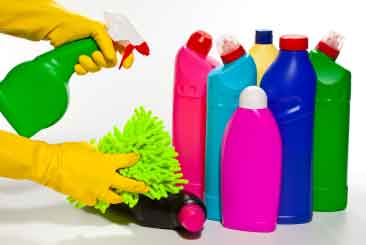|
|
| Disinfectants: More We Should Know |
| By Robert Kravitz, President AlturaSolutions |
| Published: 08/17/2020 |
 Last month, there was an article in this publication about the use of disinfectants in correctional facilities. A link to that article is here.
Last month, there was an article in this publication about the use of disinfectants in correctional facilities. A link to that article is here.
If you did not read that article, it is well worth reviewing. It details how to select and use disinfectants in a correctional facility. In this article, I would like to clarify for correctional administrators some key facts they need to know about disinfectants, sanitizers, and sterilization. Further, we will discuss the different types of disinfectants that may be used in a correctional facility, all to ensure the right product is being used for the right purpose. Let us start with some definitions: Sterilization. This refers to killing all forms of life, including viruses and bacteria, as well as spores and fungi, on a surface. It is accomplished through a combination of chemicals, high pressure, and heat. Sterilization is rare in any form of professional cleaning. Medical equipment, dental equipment, and laboratory equipment are sterilized, but not surfaces such as counters, fixtures, walls, or floors. Sanitizers. When we sanitize a surface, we are taking steps to reduce the number of pathogens on that surface to what is considered a safe level for public health. In most forms of cleaning, that is our goal, and very often, this can be accomplished with just effective cleaning. If cleaning food service areas in a correctional location, effective cleaning and a sanitizer may be all that is needed. Disinfectants. When disinfectants are used, we take hygienic cleaning to a much higher level. While sanitizers are designed to reduce the number of pathogens on a surface to safe levels, disinfectants are designed to kill pathogens on a surface based on the product's "kill claims" and when the product is used as directed per the manufacturer's instructions. The Types of Disinfectants Disinfectants fall into four categories. To help explain these categories, I have called on an expert from the professional cleaning industry, Drew Bunn, Kaivac Cleaning System’s Canadian Director of Sales. His company manufactures professional cleaning chemicals and systems that help eliminate the spread of infection. According to Bunn, these are the four categories and what they reference: General Disinfectant "This type of disinfectant is effective against different types of bacteria, germs, and other pathogens. Before COVID, this type of disinfectant was likely all that we needed. The goal with a general disinfectant is not to attack a specific pathogen, but be effective against several commonly found pathogens on a surface." Limited Disinfectant A limited disinfectant is effective against a specific type of pathogen or group of microorganisms. “If, for instance, there are concerns in a correctional facility about norovirus, administrators should select a disinfectant specifically designed to deactivate norovirus.” N-List This is a new category and created due to the pandemic. “N-List disinfectants have been tested and proven to be effective against the pathogens that cause COVID-19.” Many of these are disinfectants that have already been evaluated by the Environmental Protection Agency (EPA). However, the EPA has retested or evaluated them, to ensure they are effective against the virus. The product’s label or marketing material should note if it is on the N-List. Hospital-Grade Disinfectants "These disinfectants are engineered to be effective against different types of nosocomial (healthcare-acquired) bacterial pathogens. In the past, they have generally been used in hospitals, medical clinics, dental offices, or other healthcare-related facilities. But now, with COVID, we are finding more uses for hospital-grade disinfectants. In a correctional facility, they should be used to clean floors, communal shower areas, common-area restrooms, and food service work and dining areas." Bunn adds that his company has put extra time and resources into developing a new, multipurpose hospital-grade disinfectant. "Like other members of the professional cleaning industry, we are doing everything we can to address this ever-evolving and exceedingly difficult situation caused by the pandemic." As you can see, there is a lot to know about disinfectants and the different types of solutions used to reduce and kill pathogens on surfaces. As recommended in the previous article, correctional administrators should turn to distributors and manufacturers that know these products well and can guide them as to which ones to use and how best to use them. As a writer for the corrections industry, I can imagine how difficult this pandemic has been for correctional administrators. Seek all the help you can get; it will ultimately pay off. Robert Kravitz is a frequent writer for the correctional industry. He can be reached at robert.kravitz@outlook.com |
MARKETPLACE search vendors | advanced search

IN CASE YOU MISSED IT
|


Comments:
No comments have been posted for this article.
Login to let us know what you think